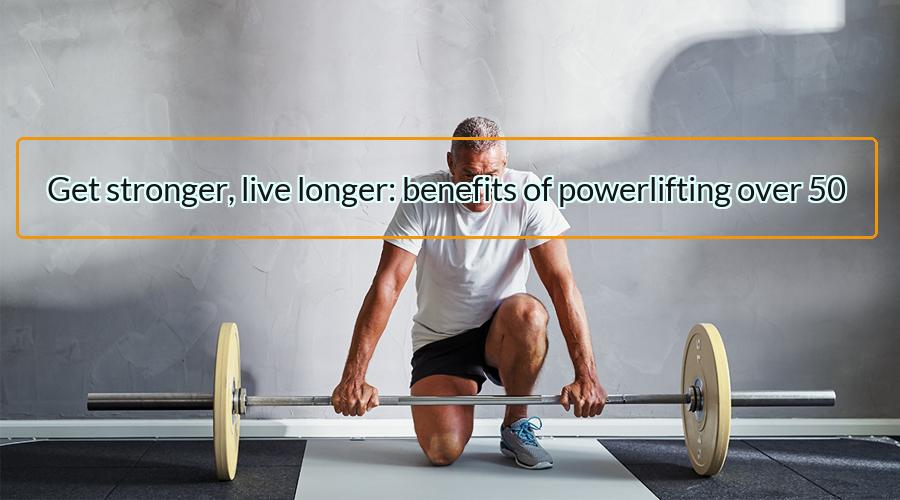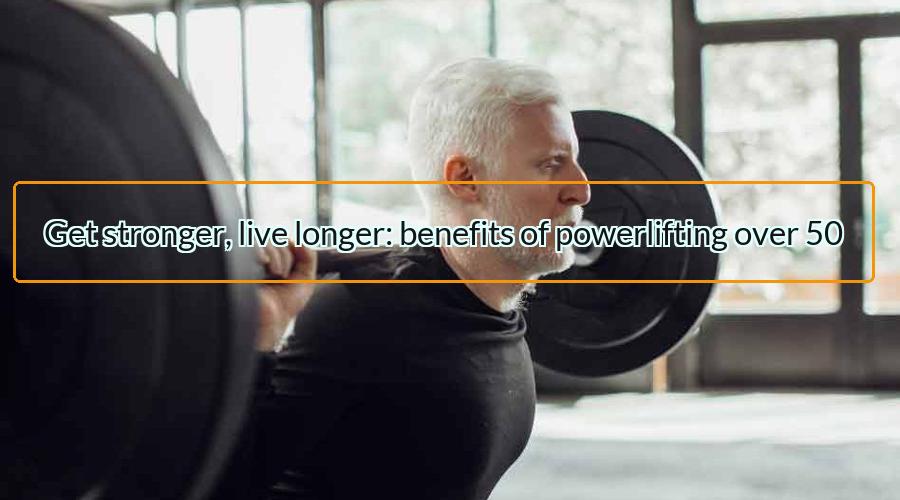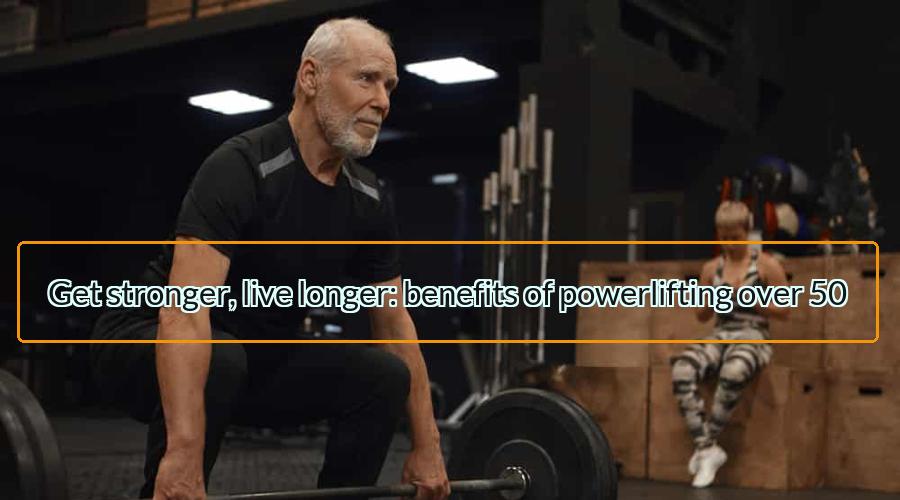
We are living in a time when it is more important than ever to take care of our health and well-being. Powerlifting is an increasingly popular form of fitness and strength training, especially among those over 50. Powerlifting focuses on building maximal strength and muscle mass through the use of squats, deadlifts, bench presses, and other compound movements. It can be a great way for older individuals to stay fit, reduce their risk of injury, and even gain muscle.
How to train powerlifting over 50?
With age, comes a certain set of physical limitations and changes that can affect our ability to perform certain activities. Powerlifting is no exception — as we age, it becomes more difficult to keep up with the same level of intensity in training as when we were younger. Despite this fact, powerlifting over 50 is still possible with proper technique and dedication.
For those who are interested in powerlifting over 50, there are a few key tips to consider when starting out. First, focus on form and technique rather than weight — these factors should be given priority over lifting the heaviest weights possible. Second, allow enough rest time between sets and workouts which will help preserve energy levels for higher quality sessions later on. Finally, begin slowly and gradually increase intensity as you gain strength and confidence in your abilities.
Main benefits of powerlifting for men and women over 50
Powerlifting is an incredibly beneficial exercise for men and women over 50. It increases muscle mass, which helps to maintain a healthy weight and improve balance. Additionally, it provides an excellent cardiovascular workout that can help reduce the risk of heart disease and stroke. Powerlifting is also an excellent way to improve mental health, as it has been shown to increase self-confidence and decrease stress levels due to the endorphin release during exercise.
For those over 50 who are looking for a way to stay fit, powerlifting offers numerous advantages. Not only does it build strength, but it also increases bone density which can help protect against osteoporosis. It also increases flexibility and range of motion in the joints while improving coordination between muscles groups – something that can be especially helpful as we age.
Read more about Winstrol Results After 2 Weeks

How to start powerlifting at 50?
As a 50-year-old, it’s never too late to start powerlifting. Powerlifting is an excellent way to boost bone density, increase strength and muscle mass, and improve overall health. It’s also a great way to stay in shape while having fun. With the right approach, anyone over 50 can get started with powerlifting safely and effectively.
Beginning any exercise program at age 50 carries some additional risk factors that need to be kept in mind. Talk with your doctor before starting a powerlifting routine as they may have specific advice tailored to your individual needs. You should also consult with a certified personal trainer or physical therapist who specializes in weight training for those over 50 years old; they will help you create an ideal routine that takes into consideration any pre-existing conditions or special needs you may have.
Is powerlifting over 50 safe?
Powerlifting over 50 is becoming a popular activity for those looking to stay fit and healthy as they age. But is it safe for senior citizens? As powerlifting involves lifting heavy weights, people often wonder if it is too dangerous for older adults.
The good news is that powerlifting can be an incredibly safe and beneficial exercise for people over the age of 50. Research has shown that strength training can help to reduce signs of aging, improve bone density and balance, reduce the risk of falls, support weight loss efforts and even help to reduce stress levels. Additionally, when done under supervision or with guidance from reputable trainers, powerlifting in this age group can provide numerous physical benefits without putting their bodies at risk.

Tips for powerlifting over 50
Powerlifting is a great way to stay physically active and healthy regardless of age. People over 50 may have different needs when it comes to powerlifting, however, as the aging process can affect strength and physical ability. Here are some tips for people who are interested in powerlifting over 50.
First, it is important to understand the body’s limitations and adjust workouts accordingly. Powerlifters over 50 should be aware of joint pain or other medical conditions that may be exacerbated by weight training and consult with a doctor before starting any exercise routine. Also, work within your own range of motion when lifting weights; this will help prevent injury while still allowing you to gain strength safely.
It is also important to focus on form instead of weight when doing lifts as form will build good habits and help protect against injury.
Read more about Punching with Weights
The best powerlifting exercise for men over 50
Powerlifting is a great way for men over the age of 50 to stay in shape. It’s an activity that focuses on combining strength and endurance, both important elements of physical health at any age. If you’re looking to get into powerlifting as you get older, there are some exercises you should focus on that can help ensure maximum benefit and safety.
One of the best powerlifting exercises for men over 50 is the deadlift. This exercise works nearly all muscle groups in the body and can help improve balance, flexibility, coordination and core strength. When performing a deadlift it is important to use correct posture and maintain proper form throughout each rep; this will reduce your risk of injury by correctly engaging your muscles. Additionally, using controlled movements when lifting weights helps prevent strain or damage to joints or ligaments.

How strongly do you need to be to compete in powerlifting over 50?
Powerlifting is a physical sport that requires strength and determination. For those over the age of 50, competing in powerlifting can be a rewarding experience, but it also comes with its own set of challenges. To succeed in the sport at this age, you need to have both physical and mental strength.
In terms of physical strength, training plays an important role in helping older athletes stay competitive in the sport. A consistent workout routine and proper nutrition are essential for maintaining muscle mass and improving overall fitness levels. It’s also important to focus on technique while lifting heavy weights as form is key to preventing injury.
Mentally, powerlifters over 50 need resilience to keep going even when faced with difficult obstacles or setbacks on their journey towards success.
What are the rules for powerlifting competitions for men over 50?
The sport of powerlifting is a great way for men over 50 to stay in shape, build strength and compete against their peers. Powerlifting competitions offer an exciting way to challenge yourself while also providing an opportunity to become part of a larger community of athletes.

For those who are interested in participating in powerlifting competitions, there are specific rules that must be followed. To compete in most events, men over 50 must meet age requirements, present proof of medical clearance and abide by weight classes as designated by the governing body. Equipment requirements include shoes, t-shirts or tank tops without zippers or pockets, shorts without zippers or pockets and a belt which must be worn at all times during the competition. Additionally, a valid ID badge from the sanctioning body must be presented upon check-in on the day of competition.
What are the best powerlifting exercises for over 50?
Powerlifting exercises for individuals over 50 should focus on strength and balance. Squats, deadlifts, overhead presses, bench presses, rows, and pull-ups are all great exercises to build strength. Additionally, incorporating core exercises such as planks and side bridges can help improve balance and stability. It’s important to use proper form when performing these exercises in order to avoid injury.
What are the best powerlifting supplements for over 50?
Creatine monohydrate and beta-alanine are two of the best powerlifting supplements for people over 50. Creatine helps to increase strength and muscle mass, while beta-alanine helps to improve muscular endurance. Both supplements have been proven to be safe and effective for older adults. Additionally, taking a multivitamin can help provide essential vitamins and minerals that may be lacking in an aging adult’s diet.
What are the requirements for powerlifting at 50?
Powerlifting at 50 should be approached with caution. It is important to check with your doctor before beginning any new exercise regimen. Additionally, it is important to focus on proper form and technique, as well as start off with lighter weights and gradually increase the weight over time. Stretching and warming up before each workout is also essential for avoiding injury. Finally, make sure to take rest days in between workouts to allow your body time to recover.